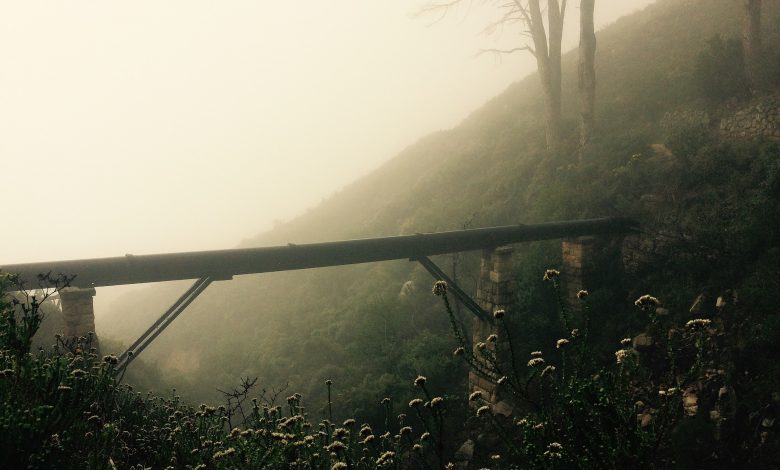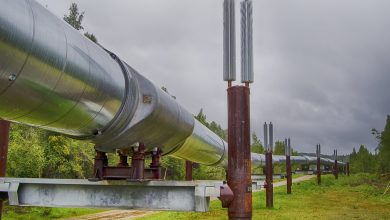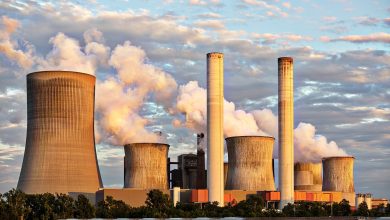Different Types of Pipeline Every Natural Gas Engineer Needs To Know About

Natural gas, also referred to as fossil fuels, is a nonrenewable source of energy made up of naturally occurring hydrocarbons. It is primarily made up of methane. However, different varieties of natural gas are prepared by altering the level of alkanes in its composition. Natural gas is used for several purposes all around the world – heating, cooking, fuel for vehicles, irrigation, electricity generation, and more. It is this natural gas in its compressed form that is used in vehicles all over the globe and is famously referred to as Compressed Natural Gas or CNG. Now, this natural gas can reach consumers and other import – export facilities through pipelines or by road, rail, ship, or air.
Pipelines are long distance distribution systems for natural gas. These pipelines directly transport natural gas from well sites to the market area of natural gas consumers or end consumers. These market areas can be industrial, commercial, or residential. While pipelines are not a 100% foolproof way of transporting natural gas, compared to road, rail, ship, or air, pipelines are the safest way to transport natural gas over not just short but also long distances. Pipelines also transport a wide variety of substances other than natural gas, such as oil, bio fuels, water, liquid petroleum, sewage, slurry, beer, hot water, and steam. Pipelines for slurry, sewage, beer, hot water, and steam are typically way shorter in length than pipelines for crude oil or natural gas.
Natural Gas Pipelines: Introduction and History
Natural gas is formed under the surface of the Earth over millions of years. Layers of decomposing plant and animal matter get exposed to intense levels of heat and pressure over the years which then cause the matter to get converted into natural gas. When this natural gas is extracted, it needs to be processed to remove impurities and is then sent for consumption to the end consumers. To transport natural gas from one point to the other, there are majorly five kinds of pipelines available.
- Gathering Pipelines
- Transmission Pipelines
- Distribution Pipelines
- Main Lines
- Service Lines
- Flow Lines
- Feeder Pipelines
While some of these natural gas pipelines are installed above the ground, most of them are installed underground. Many are also installed at deep underwater levels to transport natural gas extracted from the sea bed.
A large portion of natural gas pipeline networks all around the world were installed in the 1950s. The second World War had recently ended and the entire world was in desperate need of energy resources. This led to the high demand of alternate energy resources, i.e natural gas. Due to its high demand, it was also quite expensive. This allowed the producers of natural gas to expand their projects to other areas of the world as well. However, the need for natural gas increased again when the combustion of products of crude oil was reaching alarming levels and the world desperately needed an alternate energy resource that was more sustainable. The world urgently needed an energy resource which produced less pollution upon combustion and was also easier to obtain.
In the years spanning from 2003 to 2008, the demand for natural gas increased more than ever before. Over the years, advanced drilling techniques led to more extraction and processing of natural gas, which significantly increased the supply, lowering its cost. Thus, natural gas became not only a sustainable and environment friendly option for energy utilization, but also affordable for every class of consumers.
As a natural gas engineer, you must make sure you know several types of natural gas pipelines, what they are used for, what size they are, if they are regulated by government bodies or not, and more. You need to make sure that you are well versed with each and every type of pipeline so that you can effectively prepare pipeline projects without any scope for accidents and derailments. Here is a detailed look at each of these pipelines.

Gathering Pipelines
After its extraction, natural gas needs to be processed before it can be used for commercial and household purposes. There are typically four impurities that need to be removed. These include oil and condensate removal, water removal, separation of natural gas liquids, and sulphur and carbon dioxide removal. The removal of impurities is done at plants where the natural gas is stored in large storage tanks and then sent in for processing. Pipelines are required to transport the freshly extracted natural gas from the excavation point to the processing point. These pipelines are referred to as gathering pipelines.
The processing point can either be where the complete processing takes place or simply the initial treatment point. In case the natural gas needs to be transported to different treatment points, secondary pipelines are used to carry out the transportation. These are almost always of the same length and diameter as gathering pipelines. Other than natural gas, these pipes also carry crude oil and other natural gas liquids. Natural gas obtained from deep underwater excavation is also transported to the surface via pipes called subsea pipes, which are considered to be in the category of gathering pipelines owing to their smaller diameter and shorter length.
It is very important to quickly process the natural gas that has been extracted. This ensures that the natural gas does not go bad. To make sure that the processing of the raw and impure natural gas begins quickly, not only are the processing points closer to the site of excavation or extraction, the gathering pipelines are also shorter in length than other pipelines, especially transmission pipelines that typically run across cities or even across countries. Gathering pipelines are usually less than 1,000 feet in length and quickly transport the natural gas from the extraction points to the treatment points.
The diameter of gathering pipelines is also pretty small, typically under 18 inches for natural gas and under 8 inches for crude oils. The smaller diameter of the gathering pipelines also ensures a higher pressure inside the pipelines, making sure that the natural gas travels faster through the pipelines from the extraction point to the processing plants. The typical pressure inside a natural gas gathering pipeline is about 715 psi. By far, when considering the entire length of the network of pipelines from the extraction points to the end consumers (industrial, commercial, and residential), the gathering pipelines are the ones with the highest pressure level.
Transmission Pipelines
Transmission pipelines are also referred to as transportation pipelines. After the natural gas has been completely processed and purified, it needs to be transported to distribution centers. These distribution centers are mostly located far from the extraction points and are either the points where natural gas is transported to the end consumers or to some other distribution center into the city. This is why pipelines are required to transport the processed natural gas. Rail, road, ship, or air are not a feasible option to do so owing to the safety concerns and the cost of transportation. Thus, transmission pipelines can run either inside a city, across cities, across countries, or even across continents.
The West – East Pipeline Project is one of the biggest transmission pipeline projects in the world. The second phase of the West – East Pipeline Project usually referred to as the WEPP II, which was commissioned in June 2011, runs a total distance of 8,704 kilometers. The project covers the Tarim Basin in Xinjiang Autonomous Region and Turkmenistan with the Yangtze Delta and Pearl Delta regions. This accounts for nearly 560,000 square kilometres of area. Previously, the first phase of this project, referred to as the WEPP I, covered a length of over 4,000 kilometers. Transmission pipelines typically have a large diameter. The diameter can be anywhere between 10 inches to 42 inches. The reason for such a large diameter is to ensure that a large amount of natural gas can be easily transported over long distances.
Owing to the long distance that the natural gas needs to travel in transmission pipelines, they need to be pressurized intelligently. This not only ensures that the natural gas in the pipelines is transported easily from one point to the other, but also that the pipes do not burst due to high pressure. The pressure in these transmission or transportation pipelines is typically between 200 to 1500 psi. To regulate the pressure and make sure the natural gas in the pipelines moves properly, compressor stations are installed at intervals of 40 to 100 miles. These regulate the pressure at constant intervals and also make sure that the pressure is not too much, causing the pipelines to burst.
Owing to the long haul nature of these pipelines, the biggest concern is their safety. Safety issues include pipe seam failures, corrosion, material failure, and defective welding. The smallest of holes or fissures can cause the pipeline to burst, and since they are spread over a large distance, fixing these can be a huge problem too. This is why the installation of these pipelines needs to be done carefully with top grade materials. This requirement also leads the project to become very costly. Any negligence can cause the pipes to burst, leading to environmental and life hazards.

Distribution Pipelines
Natural gas travels at pretty high pressure through both gathering pipelines and transmission pipelines. Natural gas cannot be provided to end consumers at such a high pressure, especially to households where natural gas is used for cooking and heating purposes. This is why the pressure of natural gas in the pipelines needs to be reduced down to a very low level to avoid any accidents or hazards. This significant reduction in pressure is carried out in the distribution pipelines, which transport the natural gas from the extraction point via the gathering pipelines through the transmission pipelines to industrial, commercial, and residential end consumers.
There are typically two important components of a distribution pipeline. These two are as follows:
- Main Lines
- Service Lines
Main Lines
There needs to be a certain section in the length of the distribution pipelines where the pressure reduction needs to be carried out. This happens in the main lines. These are basically the junction between the transmission pipelines (where the pressure is considerably high and not suitable for transportation to end consumers) and the distribution pipelines (where the pressure is considerably low and the natural gas is safe to be transported to end users whether in industries, offices, households, etc). Pressure regulation is a very crucial step in the transportation of natural gases between multiple points and is very prone to accidents and safety concerns. This is why these pipelines are made up of high grade construction materials, such as steel, cast iron, plastic and copper.
If the pressure in these pipelines is not regulated properly, it could lead to massive bursts and leakages. This is harmful for both the environment and lives. Moreover, the repair of these pipelines is tricky too since they extend over large distances and can be very expensive.
Service Lines
Service pipelines are the ones where the pressure of the natural gas is significantly lower than at any point in the entire network of pipelines starting from the extraction points. Service pipelines consist of a meter which records how much gas is being delivered through a pipeline to a particular point. The pressure in these service pipelines is as low as 6 psi. The length of these pipelines depends on how far the end consumer is but mostly the length is comparable to the length of a gathering pipeline. The diameter of these service pipelines is also comparable to gathering pipelines, but it isn’t as small.
The lowering of pressure in these distribution pipelines is usually done in the outskirts of a city. Pressure is lowered to as low as 6 psi just before it enters the main city. These types of pipelines are not only used to deliver natural gas, but also short distance transportation materials, such as hot water, clean drinking water, and more. Just like any other pipeline, distribution pipelines are also required to be made with high standard materials so that there is no scope for accidental bursts, fissures, and the likes. Such accidents can cause safety concerns for not only the lives of humans, animals, and plants but also cause multiple environmental hazards with long term effects.

Other Important Secondary Pipelines
The gathering pipeline, transmission or transportation pipeline, and distribution pipeline are the three most important pipelines involved in the transportation of natural gas (each making their own individual systems). However, there are two other types of secondary pipelines which are as crucial as any other pipeline in the entire network – flowlines and feeder pipelines. These help connect smaller portions of the natural gas pipeline network. Here is a detailed look at each of these two types of secondary pipelines.
Flowlines
Natural gas is not extracted from a single point. There are multiple extraction points in a single extraction area where drilling takes place. The output from all of these points are required to be merged at a single point so that the natural gas can then be sent for processing via gathering pipelines. This is what flowlines are used for. The raw and impure natural gas is brought to a single wellhead via these flowlines. The natural gas gathered here has a horde of impurities, such as gas, water, sand, and more.
Flowlines connect together and merge with the gathering pipelines. Flowlines are not very long in length and have a diameter of not more than 12 inches. Flowlines are also the most prone to accidents. Small leaks and fissures can cause large amounts of raw and impure natural gas to seep out, causing major environmental hazards. Each of these flowlines are made with top notch construction materials and are installed very carefully.
Feeder Pipelines
Once the natural gas has been taken to the processing plants and thoroughly processed, it needs to be carried through large distances to be then provided to end consumers. This is done via transmission or transportation lines. However, the natural gas must be sent from the processing plants or storage tanks to these transmission pipelines. This is made possible with the help of feeder pipelines. They carry the processed natural gas from the storage tanks where they have been stored after proper and complete processing to the transmission or transportation lines.
In other scenarios, these feeder pipelines also carry crude oil and natural gas liquids to their appropriate destinations. The diameter of these feeder pipelines is comparable to that of flowlines. Feeder pipelines typically have a diameter not more than 12 inches. This allows the processed natural gas to travel through the pipelines at a safe pace. Once these feeder pipelines send the natural gas to the transmission pipelines, it is then carried into the city to be distributed to end consumers.



